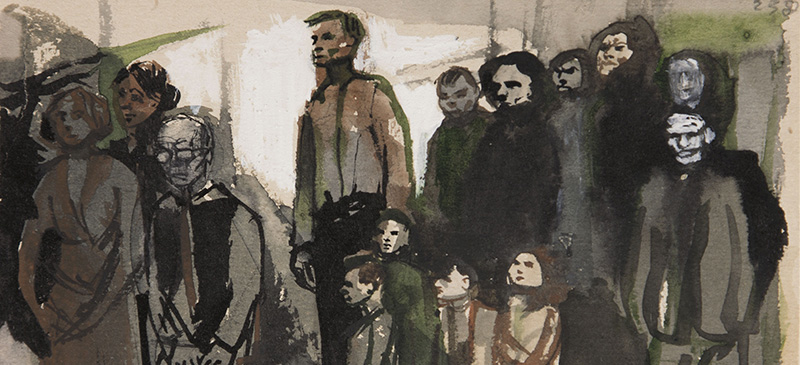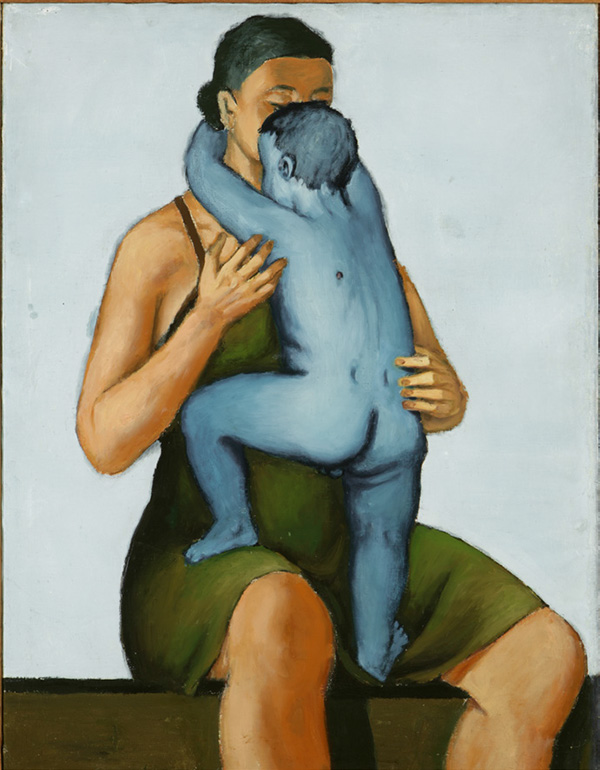ART-PRESENTATION: Andrzej Wróblewski
 Andrzej Wróblewski (15/6/1927-23/3/1957), despite his short life, is one of the most important Polish artists of the 20Th Century. Wróblewski was a creator of formal experiments on the border of abstraction and figuration,
an artist manifesting an unusually suggestive vision of war and human degradation, based on deep political commitments. His rich, diverse body of work was created over a very brief period (less than ten years), during a distinctly turbulent era.
Andrzej Wróblewski (15/6/1927-23/3/1957), despite his short life, is one of the most important Polish artists of the 20Th Century. Wróblewski was a creator of formal experiments on the border of abstraction and figuration,
an artist manifesting an unusually suggestive vision of war and human degradation, based on deep political commitments. His rich, diverse body of work was created over a very brief period (less than ten years), during a distinctly turbulent era.
By Efi Michalarou
Photo: David Zwirner Gallery Archive
An exhibition of work by Polish artist Andrzej Wróblewski is on presentation at David Zwirner Gallery in London. Shortly after moving from his hometown of Vilnius to Kraków in 1945, Wróblewski concurrently enrolled in the painting and sculpture program at the Kraków Academy of Fine Art. For a part of this period (1945-48), he simultaneously studied art history at the Jagiellonian University. Initially Wróblewski dabbled in the graphic arts creating wood engravings and later sporadically venturing into lithography. His first paintings were very much Capist* in spirit. Early in his career, towards the end of the 1940s, he began to rebel against the dominant Colorist style propagated in academic circles. At the Exhibition of Modern Art (Kraków, 1948), where Wróblewski effectively debuted as a painter, he exhibited some original spatial forms. He remained faithful to painting, a medium he hoped would allow him to transcend mere visualization. It was these hopes – these ambitions to create socially engaged, communicative art – that were the source of his rebellion against Colorism. Rebellion inspired him to act and in 1948 Wróblewski initiated efforts to create the Self-Teaching Club as a unit of the Association of Polish Academic Youth at the Kraków Academy of Fine Arts. This was the first group in the history of Polish art to openly manifest against the aesthetics of Colorism. Throughout 1947-48 Wróblewski focused on experimentation in his own work (primarily oil paintings and gouaches), searching for unique means of expression, remaining open to the influences of various tendencies, which also strongly influenced other Kraków artists. Through exploration Wroblewski devised his own formal language, the source of which was direct and meticulous observation of reality. The artist seems to subject these observations to artistic interpretation, above all striving for a heightened expressiveness, and achieving this mainly by deforming figures and using synthesized, flat planes of intense color that seem to carry metaphorical meaning. In his series “Rozstrzelania”, dating from the end of the 1940s, scenes of events during the German occupation of Poland are exceptional for the intensity of feeling they provoke. The artist accomplishes this by depicting brutally deformed human figures torn into pieces; at the same time the canvasses are maintained in cold, blue-green, cadaver-like hues. Wroblewski reverted to his previous interests mid way through the 1950s, creating a series of figurative paintings centering on the subject of the family. Generally positive in mood, they were inspired by the artist’s private life. Nevertheless, the artist continued mainly to depict the difficulties and fundamentally tragic nature of human existence. Frequently he would deform, almost injure the figures he painted, granting them highly grotesque forms. Wróblewski died tragically when he was only thirty years old, mountain climbing in the Tatras. Though abundant, his output was far from homogeneous. It includes numerous experiments, sketches, works on a variety of subjects that he approached in innumerable ways.
*Kapists were a group of Polish painters of the 1930s who dominated the Polish artistic landscape of the epoch. Contrary to Polish romanticist traditions, the Kapists underlined the independence of art from any historical tradition, symbolism or influences of literature and history. They were formed around Józef Pankiewicz and were under strong influence of the French Post-Impressionists.
Info: David Zwirner Gallery, 24 Grafton Street, London, Duration: 16/3-14/4/18, Days & Hours: Tue-Sat 10:00-18:00, www.davidzwirner.com

